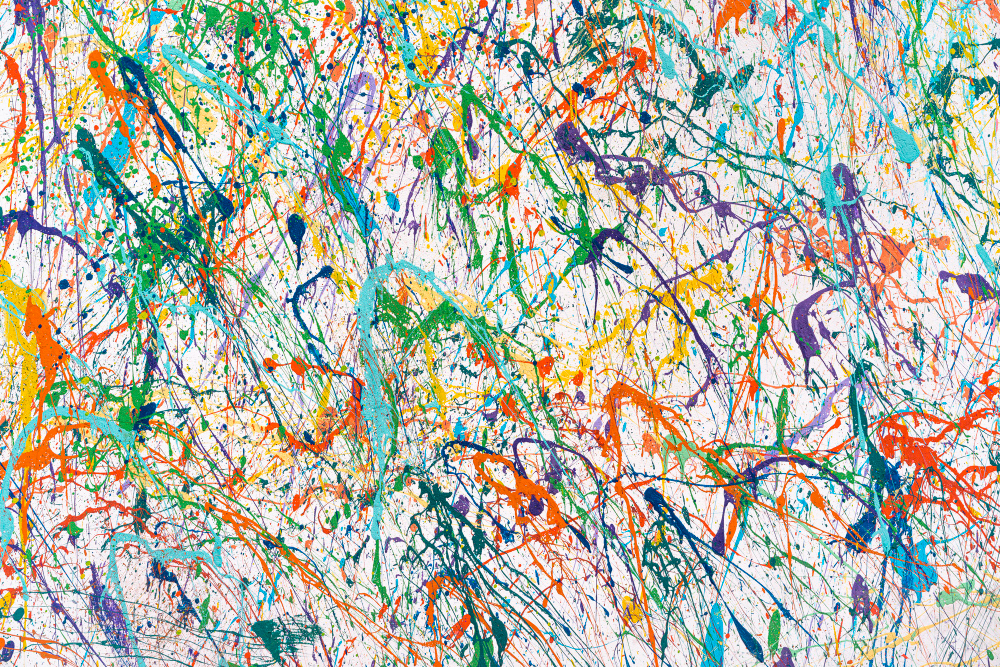
Jackson Pollock: A Biography of the Master of Abstract Expressionism
Jan 31, 2024 By Frederica
Jackson Pollock was a maverick in the art world, known for his unique and unconventional painting techniques. His drip paintings, created by flinging and pouring paint onto canvases spread out on the floor, are some of the most iconic pieces of modern art. But what many people don't know is that Pollock's life was just as fascinating as his art.
From his tumultuous upbringing to his struggles, Pollock's personal life was marked by both triumphs and tragedies. Yet, despite the challenges he faced, he continued to push the boundaries of art and create works that were unlike anything that had been seen before. In this guide, we'll take a closer look at the life and art of Jackson Pollock, exploring the man behind the masterpieces.
Early Life and Influences
Did you know that his mother, Stella May McClure, fostered the legendary artist Jackson Pollock's creativity from an early age? Growing up in a small town in Wyoming, Pollock had limited exposure to the art world, but his mother's encouragement helped him develop a knack for the arts.
Later in his life, Pollock moved to New York City, where he studied under influential artists like Thomas Hart Benton and became involved with the Works Progress Administration (WPA). The WPA exposed Pollock to various artistic styles and techniques, which helped shape his unique artistic style.
Pollock experimented with various artistic styles, including figurative and surrealist art, throughout his early career. But it wasn't until the 1940s that he found his artistic voice, paving the way for his groundbreaking contributions to the art world.
The Evolution of Pollock's Artistic Style
Are you familiar with Jackson Pollock? He was a renowned artist whose work revolutionized the art world in the 1940s. Pollock's artistic style underwent a dramatic transformation during this time as he shifted away from traditional figurative representation and began to explore a new movement called Abstract Expressionism. This movement was characterized by the spontaneous and emotional expression of the artist, and Pollock's work was a perfect example of this.
What inspired Pollock to move towards abstraction? Well, he was heavily influenced by his encounters with Mexican muralists, such as Diego Rivera, and his exposure to Native American art. These art forms emphasized symbolism and storytelling, which Pollock incorporated into his work.
Pollock's Unique Painting Technique - Drip Painting
Pollock's masterful drip painting techniques, born out of his passion for experimentation, revolutionized the world of art. In the late 1940s, he discarded the traditional use of brushes and instead wielded sticks, trowels, and even his own hands to pour, drip, and fling paint onto a canvas laid flat on the ground. The result was a mesmerizing display of intricate and chaotic compositions that captured the raw energy and emotions of the human experience.
With his unconventional approach, Pollock challenged the norms and pushed the boundaries of traditional artistic techniques. His drip paintings lacked recognizable forms and instead focused on the process of creation itself, inviting the viewer to dwell with the artwork on a more visceral level. By removing the barrier between the artist and the canvas, Pollock's masterpieces allowed for a more immersive experience that transcended the mere appreciation of beauty and delved deeper into the act of creation itself.
Major Works and Exhibitions
Jackson Pollock's masterpieces have left an indelible mark on the art world and continue to inspire generations of artists even today. His drip painting technique, as seen in his iconic works like "No. 5, 1948" and "Autumn Rhythm (Number 30)", was a revolutionary departure from traditional painting styles. The intricate webs of lines, splatters, and drips that characterize his large-scale canvases are a testament to the sheer energy and emotion that he infused into his art.

Pollock's unique approach to painting allowed him to capture the essence of movement and depth in a way that had never been seen before. His works have been exhibited in numerous solo and group exhibitions worldwide, gaining critical acclaim and controversy in equal measure. His first major solo exhibition in 1950 at the Betty Parsons Gallery in New York City was a game-changer that firmly established his position as a leading figure in the art world.
Pollock's Impact on the Art World
Jackson Pollock was a true trailblazer in the art world whose innovative and revolutionary approach to painting inspired generations of artists to push the boundaries of traditional techniques. His iconic drip paintings challenged the conventional norms and opened a new era of expression.
Pollock's influence extended beyond painting and profoundly impacted the development of performance art and action painting, where the act of creating itself became a performance. His legacy continues to inspire and challenge artists to think outside the box and explore new possibilities in art. Pollock's work is a true testament to the boundless potential of human creativity and expression.
Controversies and Criticism Surrounding Pollock's Art
Pollock's art was both celebrated and criticized. Some viewed his drip paintings as accidents or lacking skill, while others questioned the authenticity of his artistic process. His personal struggles with mental health were also debated, with some arguing they influenced his chaotic paintings.
Legacy and Lasting Influence
Take a moment to imagine yourself standing in front of one of Jackson Pollock's iconic drip paintings. Can you feel the energy pulsating from the canvas? Pollock's revolutionary approach to painting has left an indelible mark on the art world, inspiring countless artists to explore and push the boundaries of what is possible.

His drip paintings are a testament to the power of art to evoke emotion and connect us to the raw essence of the human experience. It's no wonder that Pollock's legacy continues to captivate and excite art enthusiasts around the globe, shaping the course of contemporary art practices for generations to come.
Resources for Further Exploration of Jackson Pollock's Life and Art
Books: "Jackson Pollock: An American Saga" by Steven Naifeh and Gregory White Smith, "Pollock" by Leonhard Emmerling, "Jackson Pollock" by Evelyn Toynton.
Documentaries: "Jackson Pollock: Love and Death on Long Island" (1999), "Pollock" (2000).
Museums and Exhibitions: Visit the Museum of Modern Art (MoMA) in New York City, which houses a significant collection of Pollock's works. Check local museums and galleries for exhibitions featuring Pollock's art.
Final Thoughts
Jackson Pollock's life and art were both complex and fascinating. He revolutionized the art world through his unique style of Abstract Expressionism, and his legacy continues to inspire and influence artists today. From his early struggles to his rise to fame, Pollock's life was filled with triumphs and tragedies that shaped his art and his identity.
Whether you are a fan of abstract art or simply interested in learning more about one of the most influential artists of the 20th century, exploring Jackson Pollock's life and art is a rewarding experience.
-
 Entertainment Feb 01, 2024
Entertainment Feb 01, 2024In-Depth Exploration of Emotions: The No Hard Feelings Movie Analysis
If you're looking for a deep dive into the hidden power of the awkward guy, explore our analysis of No Hard Feelings. Uncover the unexpected strength within awkwardness!
-
 Art Jan 30, 2024
Art Jan 30, 2024Exploring Nature's Wonders with Kylie Sandford: A Captivating Journey
Dive into the world of nature through the lens of Kylie Sandford's unique vision. Explore the beauty and intricacies of the natural world in this insightful article.
-
 Entertainment Feb 01, 2024
Entertainment Feb 01, 2024Swiftly Through Time: A Journey with Taylor Swift - The Eras Tour Review
Explore Taylor Swift's Eras Tour in this captivating review. Unveil the story of a lifetime through music, moments, and magic.
-
 Internet & Telecom Feb 01, 2024
Internet & Telecom Feb 01, 2024Managed Cloud Hosting: Everything you need to know
Explore the ins and outs of managing cloud hosting to pick the best one for your business needs. Read on for valuable insights.